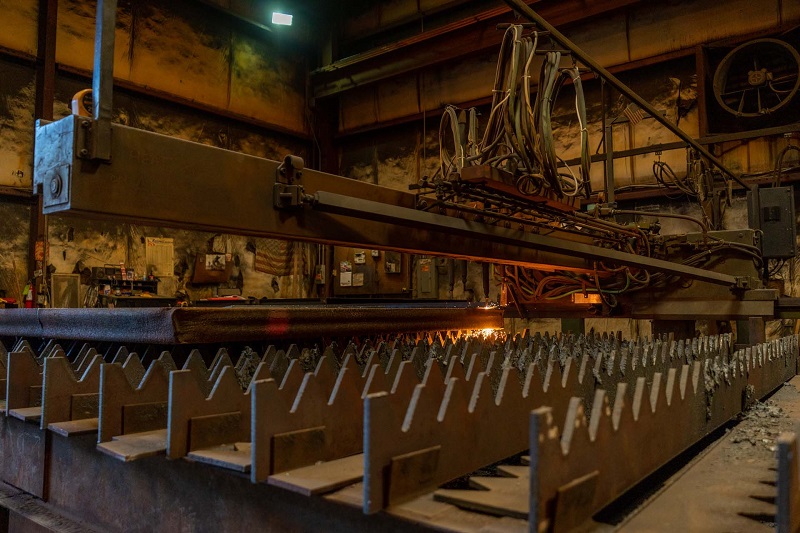FAQs
How much stock is needed for flame cutting, or burned plate, services?
Because the amount of necessary stock can vary, it's best to give your finished dimensions to your ECONSTEEL team and let them know what your finish requirements are. We will then ensure you receive parts you can use. Please keep in mind that, whenever a steel plate is burned, there will be a Heat-Affected Zone (HAZ). With some steel plates, this may only be about 1/16" per side; however, on heavier plates (+6"), this could be as much as 1/8" per side (1/4" overall). Over large-scale projects with exceptional volume, these small increments can add up. The heat-affected zone on flame cut steel will display small cracks, affected chemistry, and altered physical properties that can impact the final performance of the product. If you need a clean finish or the edges are subject to wear, you will want to clean up beyond the HAZ. In addition, you need to consider the burn tolerance, which will be larger the thicker the plate is.
What is the thickest plate you can flame cut?
Our in-house flame cutting tables are capable of completing precision cuts on material 12" thick. If you have a project that requires flame cutting of material larger than 12", please reach out to our team with more information as we work with several outside flame cutting providers who may be able to accommodate these project demands.
What is the largest part you can flame cut?
The largest burn table at our facility measures 10' x 42'. This massive flame cutting table provides ECONSTEEL with the flexibility and capacity to meet unique project requirements and large-scale parts.
Will I need to clean burn slag from parts that utilize flame cutting services?
As part of the heat-affected zone, slag can develop along the flame cut edge. ECONSTEEL's professional warehouse staff will ensure your parts arrive at your facility or job site free of burn slag and ready to use.
How does flame cutting differ from plasma cutting?
The primary difference between flame cutting and plasma cutting lies in the specific fuel used to generate the heat necessary to complete the cutting process. While flame cutting uses a combination of pressurized oxygen and fuel, plasma cutting combines an electrical arc with ionized gas. While each has its own inherent advantages, determining the better approach comes down to the material type, thickness, and desired precision.

